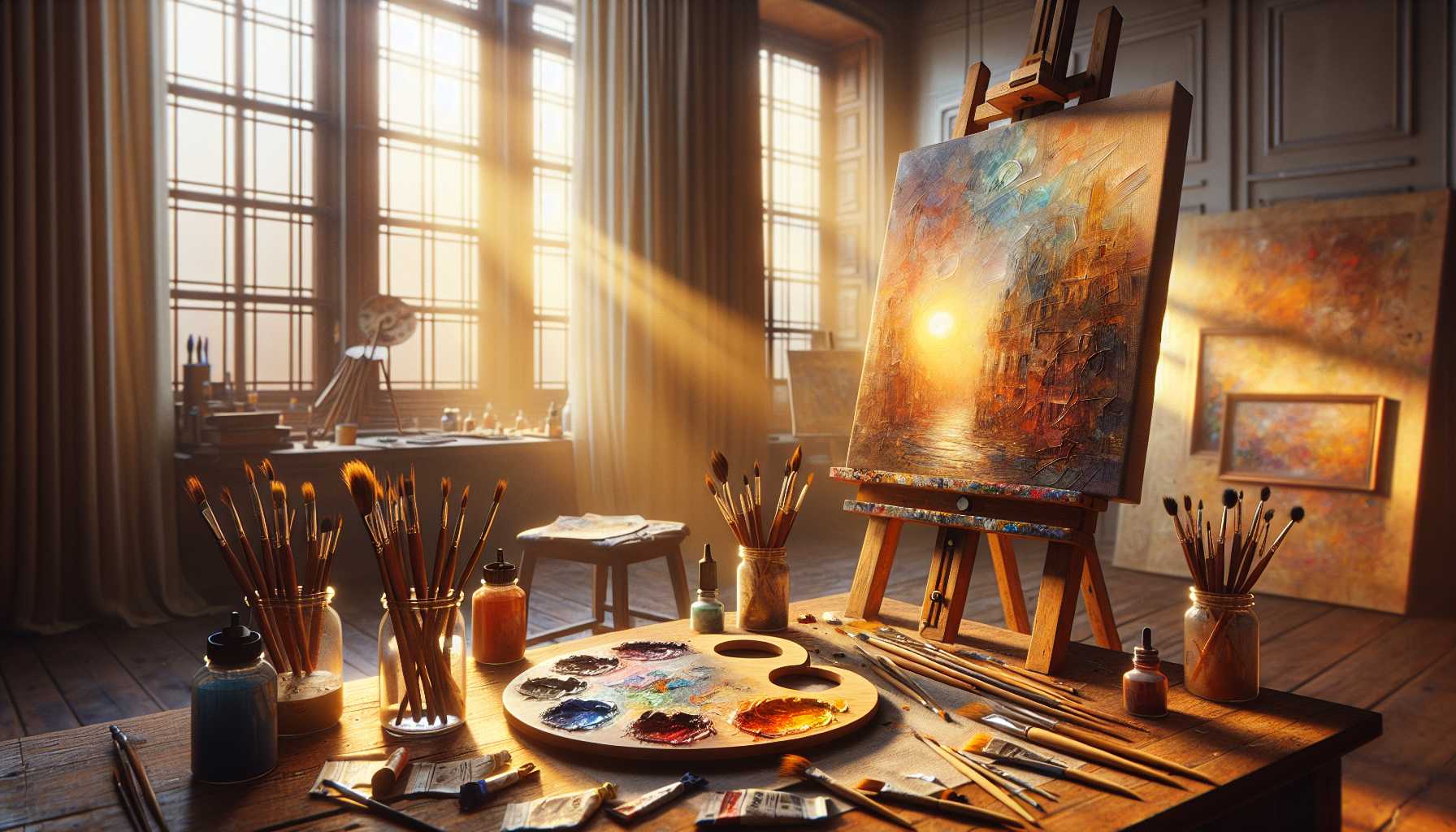Hello, blossoming artist! Ready to embark on the vibrant journey of oil painting? Grasping artistic jargon may seem daunting at the beginning, but don’t sweat it – I’m here for you! Let’s decode the vital terms you’ll require to kick-start your creative journey.
Essential Supplies and Gear
Ever felt puzzled in an art shop? Been there! Below, you’ll find the basic components you’ll often come across:
- Support: This is just a sophisticated synonym for the surface you choose to paint on, such as a canvas or board.
- Palette: This is where you blend your colors.
- Easel: The apparatus that supports your artwork while you paint.
- Gesso: This is the white preliminary coating applied to your canvas.
- Medium: Specific substances used to alter the properties of your paints.
Terminology Pertaining to Paint Texture
Let’s discuss the behavior of your paints:
- Impasto: Refers to dense, heavy-set paint that appears raised off the canvas.
- Glaze: A highly translucent, thin layer of paint.
- Scumbling: Textured overlay achieved using almost dry paint.
- Buttery: Ideal paint consistency – neither overly dense nor excessively dilute.
Chromatic and Mixing Terminology
Colors are your newly-found companions! Here are the key pointers:
- Hue: Refers to the actual color you perceive.
- Value: Refers to the relative lightness or darkness of a color.
- Tone: The outcome of adding gray to a hue.
- Tint: A hue blended with white.
- Shade: A hue combined with black.
Artistic Techniques
Get ready to put those brushes in action! Popular methodologies comprise:
- Blending: Mixing colors together for a seamless blend.
- Underpainting: The foundational layer that sets the overall tone.
- Fat over lean: The practice of starting with thinner layers and progressively thickening them.
- Alla prima: Executing a wet-on-wet painting in one go.
- Blocking in: Creating a basic first layer to map out the composition.
Conventional Brush Stroke Styles
Every brushstroke narrates a tale:
- Stippling: Small pinpricks of paint.
- Hatching: Closely drawn parallel streaks.
- Cross-hatching: Intersecting lines.
- Dry Brushing: Applying minimal paint to create texture.
- Feathering: Achieving a softly blended effect.
Terms Pertaining to Maintenance and Cleaning
Your tools need love and care too:
- Solvent: Substance used for cleaning your brushes (like turpentine).
- Drying Time: Refers to the length of time required for your paint to harden.
- Curing: The process of the oil paint hardening completely.
- Varnishing: The application of a protective transparent finish.
It’s important to remember that every artist was a beginner once. These terms will become instinctual as you indulge in your practice. There’s no rush to cram all these at once – simply retain this guide for reference when necessary. Have fun with your artistic endeavors! 🎨
*Crafty tip: Keep this list accessible on your phone or print it out for your workspace. Trust me, it will prove beneficial for your initial painting sessions!
